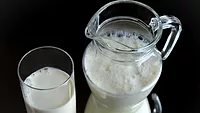FDA Now Requires Raw Pet Food Manufacturers to Consider HPAI in Food Safety Plans

Image credit: Freepik
The U.S. Food and Drug Administration has announced that raw pet food manufacturers must now consider Highly Pathogenic Avian Influenza H5N1 (HPAI H5N1) as a “known or reasonably foreseeable hazard” in their food safety plans, in compliance with the Food Safety Modernization Act (FSMA) Preventive Controls for Animal Food rule. Specifically, this new requirement applies to manufacturers of cat and dog food that are using uncooked or unpasteurized meat, poultry, or eggs derived from poultry or cattle, and are covered by the Preventive Controls for Animal Food rule.
FDA’s decision was made in light of the ongoing HPAI H5N1 outbreak affecting U.S. poultry flocks and dairy herds, which recently resulted in the sicknesses and deaths of domestic and wild cats in four states who ate raw pet food contaminated by the virus. Dogs are also capable of contracting HPAI H5N1, although their illnesses are typically less severe than those of cats, and there have not yet been any canine cases reported in the U.S. There have been fatal cases in other countries, however.
The FSMA Preventive Controls for Animal Food rule requires animal food businesses to develop a food safety plan that identifies and evaluates known or reasonably foreseeable hazards for foods to determine whether there are any hazards requiring a preventive control. Businesses must conduct a reanalysis of their food safety plan when the FDA determines it is necessary to respond to new hazards and developments in scientific understanding.
There are several practices to minimize or prevent HPAI H5N1 transmission through animal food that FDA is encouraging pet food manufacturers and others in the supply chain to employ. These practices include seeking ingredients from flocks or herds that are healthy, and taking processing steps, such as heat treatment, that are capable of inactivating viruses. Some businesses are already implementing heat treatments—which have been shown to be effective for inactivating HPAI H5N1 in meat, milk, and egg products—as a process control. Another example of such a practice would be to implement a supply chain-applied control to provide assurance that ingredients used in animal food do not come from HPAI H5N1-infected animals.
In its announcement, which can be read here, FDA also compiled a summary of current scientific literature regarding the prevalence of HPAI H5N1 in cattle and poultry and their animal-derived ingredients, the severity of HPAI H5N1 illness or injury in cats and dogs, and the impact of processing steps on inactivating HPAI H5N1.
Looking for quick answers on food safety topics?
Try Ask FSM, our new smart AI search tool.
Ask FSM →









